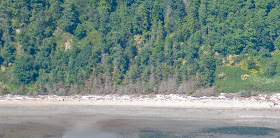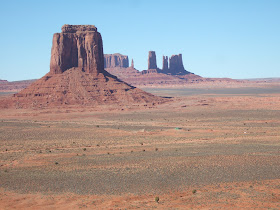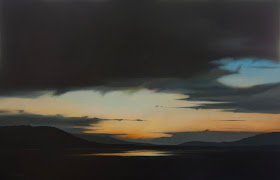I previously posted on Vedder Wall noting its glacial origin. There is a seasonal waterfall on steep cliff face that was visible during a recent trip to the Sumas Valley.
Based on the elevation of the top of the wall at this location and the valley floor, I estimate the falls to be about 400 feet.
Prior to checking out the waterfall view, I had had a very wet day. I was fairly pickled by the rain as well as the need to do a bit of stream wading. So it was nice to have a bit of late afternoon spring sun, and despite the wet weather spring has arrived in the Sumas Valley below Vedder Mountain.
The richness of the Sumas Valley farmland is the result of the area being a former lake that occupied the low area left by the Sumas ice lobe. Keeping the area drained on the Canadian side requires a lot ditches, a pumping station and a levee to hold back the Chilliwack River. With the wet weather and low gradients of the ditches there was still a fair bit of water on the valley floor when I had a view from above the Vedder wall.
Based on the elevation of the top of the wall at this location and the valley floor, I estimate the falls to be about 400 feet.
Prior to checking out the waterfall view, I had had a very wet day. I was fairly pickled by the rain as well as the need to do a bit of stream wading. So it was nice to have a bit of late afternoon spring sun, and despite the wet weather spring has arrived in the Sumas Valley below Vedder Mountain.
Spring hay and the view across the Sumas Valley floor to the northeast to the Chiilwack and Fraser Valleys
Blueberry field just south of the border
The richness of the Sumas Valley farmland is the result of the area being a former lake that occupied the low area left by the Sumas ice lobe. Keeping the area drained on the Canadian side requires a lot ditches, a pumping station and a levee to hold back the Chilliwack River. With the wet weather and low gradients of the ditches there was still a fair bit of water on the valley floor when I had a view from above the Vedder wall.

































